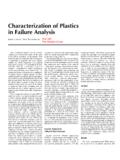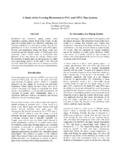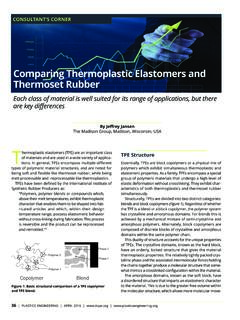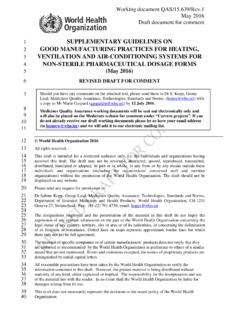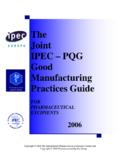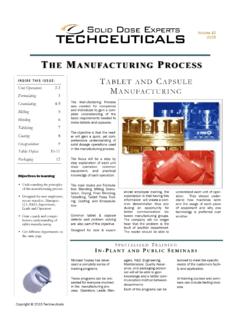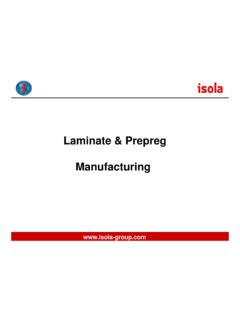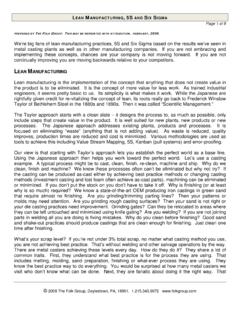Transcription of Good Vibrations—A Manufacturing Introduction to …
1 December 2017 The Madison Group TMG News Page 1 608 231 1907 In an era where innovation, lead times, and speed to market are critical to the successful launch of a product, any advantage is desirable. At The Madison Group, we pride ourselves in our knowledge and understanding of everything plastics from formulation, to processing, to product life cycle.
2 We work to provide those advantages for you to reach your path critical goals. This article covers assembly processing of plastics via ultrasonic welding. It is intended to be an overview of the process, with future, more in-depth articles to follow. There is no shortage of assembly methods when it comes to plastics. However, depending on the application, certain assembly methods will be more effective at helping ensure the longevity of the bond in the designed parts. Ultrasonic welding is an extremely popular process for joining plastics.
3 Similar to most assembly methods, ultrasonic welding has positives and negatives. This process is mainly selected due to the following: Fast Cycle Times Easy to Automate Clean Process Localized Process A wide range of polymers can be welded, but there are some restrictions in terms of which different ones can be welded together. Generally, stiffer materials provide a better medium for the welding process, including some fiber filled material. It is important to note that stiffer materials must also be able to provide an adequate amount of viscous heating to effectively weld polymers.
4 So how does it work? Ultrasonic welding bonds two plastics (similar or dissimilar polymers) via concentrated ultrasonic motion. A transducer translates electrical energy input to physical motion. The overall physical distance traveled in one stroke of this motion is the amplitude of the process. A typical amplitude range for ultrasonic welding is 10-250 m. This motion can be amplified through a booster if higher frequencies are required to weld the polymers.
5 The ultrasonic motion is then concentrated again through a horn. The horn is what contacts and delivers the ultrasonic motion to the material and begins the welding process. This is shown in Figure 1. Inside This Issue: good Vibrations A Manufacturing Introduction to Ultrasonic Welding 1 Webinar/ Failure Analysis of Plastics Two-Day Course 4 Conference/ Webinars 8 How Glass Fibers Affect the Long Term Properties of a Composite Material and the Importance of the Glass Fiber Measurement 6 December 2017 good Vibrations A Manufacturing Introduction to Ultrasonic Welding Patrick Mabry and Paul Gramann, Figure 1: A horn makes contact with two materials.
6 The energy director promotes the start of the polymer melt at the weld interface. December 2017 The Madison Group TMG News Page 2 608 231 1907 The cyclical energy is converted into heat, within the thermoplastic polymer, through intermolecular friction [1}.]
7 At the weld interface, polymer chains from both parts of the assembly become diffused and entangled once they have reached a melt state. When the welding process is complete, the resulting part should have a strong, clean, and predictable bond between the materials. This process is highlighted in Figure 2. The time for the part to cool down from the welding process is extremely short because the heating of the materials at the weld interface is highly localized. Let Us Talk Physics: The driving physics behind the ultrasonic welding process can be explained in terms of material properties and dynamics.
8 The amount of heat generation at the weld interface is directly proportional to the loss modulus of the material, along with the frequency of vibration and strain amplitude of the process [2]. The loss modulus is the amount of energy a material will dissipate as heat from dynamic input. Its value can change based upon testing conditions such as temperature, strain amplitude, and frequency. This material response can be measured with Dynamic Mechanical Analysis (DMA).
9 Characterizing the loss modulus via DMA is done with a frequency sweep analysis. An example of this type of analysis is shown in Figure 3. The sample is oscillated from lower to higher frequencies and the material response is recorded. As the frequency increases, the polymer has less time to recover the stress input and begins to dissipate the input energy as heat. Some DMA analysis can be performed to predict the dynamic material behavior at higher frequencies.
10 This is done by time-temperature superposition analysis [1]. The loss modulus is one of the only material behavior factors in determining the amount of viscous heating and may be a good way to characterize whether a material is suitable for specific ultrasonic welding processes or not. A robust ultrasonic welding process will produce enough heat generation to drive the weld interface to a melt state. Typical frequencies used in ultrasonic welding range from 20-40 kHz and the process can be limited by several different factors (Time, power, distance, force, ).
